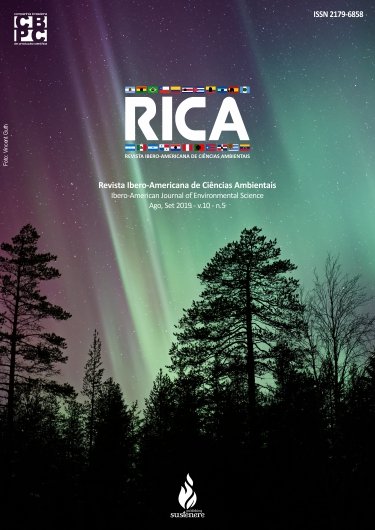Trophic state index and provenance of phosphorus and chlorophyll-a in different seasons of an Amazonian watershed
DOI:
https://doi.org/10.6008/CBPC2179-6858.2019.005.0009Keywords:
Eutrophication, Urban Rivers, Irurá, Oligotrophic, MesotrophicAbstract
The Irurá watershed is located between the northwest and southwest of the urban area of the municipality of Santarém/PA, has a history of disordered occupation influenced by various economic cycles. In this context, this disorderly and accelerated occupation generates significant impacts on water resources. One way of assessing damage is by calculating the Trophic State Index (EIT) to measure water quality, and to discuss the provenance of Phosphorus and Chlorophyll at different seasons of the year. Thus, two sampling campaigns were carried out, one in the dry season and the other in the rainy season at six points along the Igarapé. To calculate the EIT, total phosphorus (PTot) and chlorophyll a were analyzed in the six water samples. The EIT results in the two monitoring campaigns showed that in the dry season the classes ranged from ultraoligotrophic to eutrophic and in the rainy season the classes ranged from oligotrophic to eutrophic. Total Phosphorus concentrations in the rainy season are not in accordance with CONAMA Resolution 357/2005 for Class II. A statistical correlation was performed between chlorophyll-a and Total Phosphorus, and during the dry period, it showed a positive correlation, suggesting an increase in sun exposure and an increase in photosynthetic activity. As a source of effluent discharge into the body of water, as well as subsistence farming activity in some areas. Chlorophyll-a concentrations are found, at all points, within class II quality standards, in both seasons.
Downloads
Downloads
Published
Issue
Section
License
The CBPC - Companhia Brasileira de Produção Científica (Brazil CNPJ: 11.221.422/0001-03) the material rights of the published works. The rights relate to the publication of the work anywhere in the world, including rights to renewals, expansions and dissemination of the contribution, as well as other subsidiary rights. All electronically published works may subsequently be published in printed collections under the coordination of this company and / or its partners. The authors preserve the copyright, but are not allowed to publish the contribution in another medium, printed or digital, in Portuguese or in translation.









